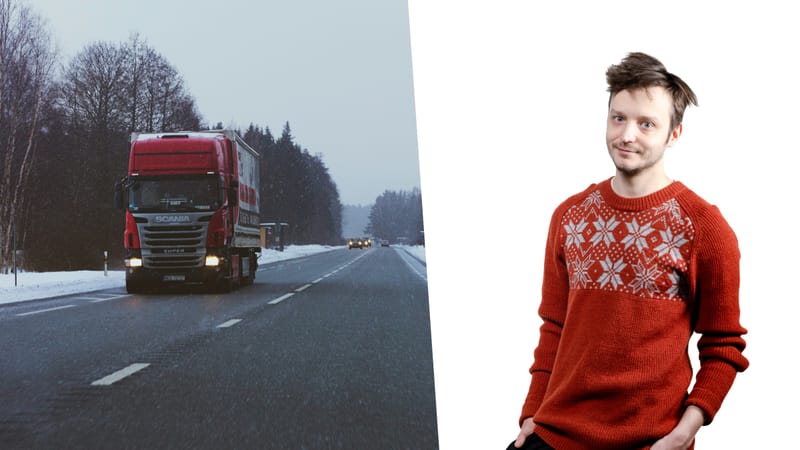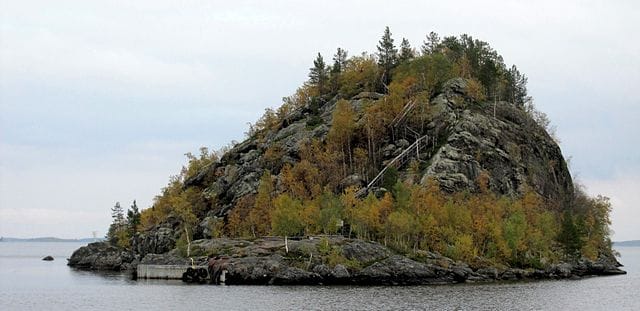Finland Cultural Guide – Part IV: Hämeenlinna, Tampere & Lahti – Heartlands of Finland
What does Finland consist of, what do the people here do? And how do Finns see each other? Join Verde Voices on a cultural journey through this country, now exploring the heartlands: Hämeenlinna, Tampere & Lahti.
Perttu Rytsölä
The grandeur of the Middle Ages – Hämeenlinna
The Manse (=Tampere) grew around the rapids
The decisive moments of the Civil War
At the very center of southern Finland lies Hämeenlinna, a settlement whose roots stretch back to the Stone Age. Rising above the town is Aulanko Hill, beside Lake Vanajavesi, once a vital waterway when roads were scarce. In the 1200s, according to legend, Birger Jarl of Sweden ordered a fortress to be built here to guard the waters. That fortress, now known as Häme Castle, still stands: a red-brick relic of medieval authority. Though it rarely saw battle, it collected taxes for centuries. Crossing its moat today, visitors are welcomed by the romance of knights and legends, though heavy renovations make it feel less medieval inside than its walls suggest.
Nearby, the Holy Cross Church of Hattula, belonging to the same era, became Finland’s second most important pilgrimage site after Turku Cathedral. Queen Margaret of Denmark even praised it as worthy of pilgrims. Stories tell of a relic from the True Cross once kept here – though if so, it has long since vanished.
Modern Hämeenlinna is Finland’s 15th largest city, once briefly considered as a potential capital. Its compact center opens to lakeside views, and its cultural jewel is the yellow wooden house where Jean Sibelius was born, museum and a place for an occasional concert. Industry is still strong here: SSAB’s steel mill dominates, alongside the Patria military vehicle factory and the Finnish Army’s Armoured Brigade. The local hockey team, HPK, keeps the city’s competitive spirit alive.
Just beyond the city, the countryside charms: leafy Turenki, the great bogs of Torronsuo, the forest trails of Liesjärvi, and Saari Park, whose sunset views inspired painter Albert Edelfelt. Together, these areas form the "Ilves Trail" network, 270 kilometers of paths linking forest, bog, and lake.
The people of Häme – one of Finland’s three ancient tribes – are often described in the saying, “slow as a Häme man.” Mocking or affectionate, it captures the region’s reputation for thoughtfulness and deliberation. Their dialect, less marked than those of east or west, eventually formed the foundation of Finland’s standard language.
Tampere: Manse on the rapids
Arriving in Tampere from the south, the first glimpse is striking: gleaming tower blocks rising above the railway, and beside them the Nokia Arena, a cathedral of Finnish ice hockey. Inside, two of Finland’s most legendary clubs battle: the globally successful Tappara and its local rival Ilves. In Tampere, hockey is more than sport: it’s identity. The first official Finnish game was played here, the first indoor rink built here, and ever since, the city has worn its title as the nation’s hockey capital with pride.
But Tampere is more than its arenas. Its heartbeat is the Tammerkoski rapids. Scottish industrialist James Finlayson and Tsar Alexander I recognized their power in 1820, founding the cotton mill that transformed Tampere into the “Manchester of Finland”—or Manse, as locals fondly call it. Around the rapids rose brick factories, then a bustling industrial city.
By 1917, when Finland declared independence, Tampere was thriving, only to become the stage for the decisive battle of the Civil War. In spring 1918, Red Guards fortified the city, but after weeks of brutal fighting, White forces under General Gustaf Mannerheim seized control. The trauma ran deep, and even today, the statue of Mannerheim overlooking the city bears the scars of occasional vandalism.
Today, the red-brick mills house schools, offices, and tech start-ups. Global companies like Sandvik, Kalmar, and Nokia keep Tampere industrial, while its food scene is famous for hearty fare – chicken wings above all. Cultural life thrives too: Tampere is Finland’s theater capital, home to celebrated stages and the beloved open-air Pyynikki Summer Theater. Its Pispala district, a wooden hillside community overlooking Lake Näsijärvi, remains a magnet for artists, musicians, and dreamers.
The city grows outward on rails: its sleek new tramline connects dense working-class Tammela or suburban Hervanta, and westward to Lielahti and Pispala. Expansion plans aim north and south, tying Tampere more tightly to its suburban satellites – Kangasala, Ylöjärvi, and Pirkkala – all drawn by its universities, job market, and affordable living compared with Helsinki.
At the foot of Salpausselkä: Lahti
South of Häme, another city rose from upheaval: Lahti. After World War II, Finland ceded a fifth of its territory to the Soviet Union, and more than 400,000 Karelians were resettled. Many stopped here, at a railway hub atop the great Salpausselkä ridge.
Formed by the retreat of the Ice Age glacier, the ridge gave Lahti snowy winters and perfect slopes for skiing. Today, the city is synonymous with the Salpausselkä Games, Finland’s classic ski event. It also marks the gateway to the Lake District. From the shore of Lake Vesijärvi, endless waters spread outward like a labyrinth. In 1875, writer Zacharias Topelius described it best:
“Every valley has its lake… where you see a lake, a pond, or a marsh, there is always the valley floor. The countless valleys are why Finland has thousands of lakes, linked together by streams and rapids, until at last they reach the sea. It is God’s work, seen in no other land.”
For centuries, Finland’s lakes were highways for trade, fishing, and floating timber. Towns like Savonlinna, Kuopio, and Jyväskylä grew where ridges met water. Today, the same waters lure leisure boaters into a maze of straits and islands once haunted by lake pirates.
Lahti itself carries a rough reputation, often unfairly. It is no less safe than anywhere in Finland, and its design pedigree is undeniable: the Sibelius Hall concert venue, the renowned Institute of Design, and companies like Isku, Asko, Luhta, and Uponor. Rapper Cheek, one of Finland’s biggest stars, hails from here. In hockey, the Pelicans bring color to the rink, if not always championships.
Yet shadows of history linger. At Hennala, Russian-built barracks became prison camps in 1918, when captured Red fighters – many of them women – were brought here at the Civil War’s end. Tales of executions and atrocities remain part of the city’s memory.
From Forssa’s mill to a minister
To the west lies Forssa, born from industry. In the 1850s, the Forssa Cotton Spinning Mill employed hundreds, mostly women and children. Among them was Miina Sillanpää, who rose from child worker to pioneering politician. In 1907 she was elected as one of the world’s first female MPs, and in 1926 she became Finland’s first female minister, championing the rights of single women and mothers.
Her story, like the riverbanks of Forssa, is a reminder: Finland’s heartlands are places where history and everyday life have always flowed together, quietly shaping the nation’s identity.
Check out the previous chapters of Finland Cultural Guide:
- Part I: Discovering Helsinki
- Part II: Metropolitan Helsinki and central Uusimaa province
- Part III: Turku and Varsinais-Suomi







